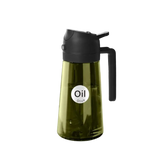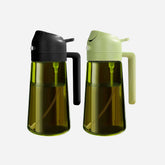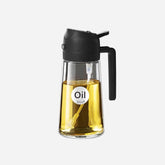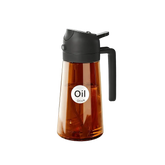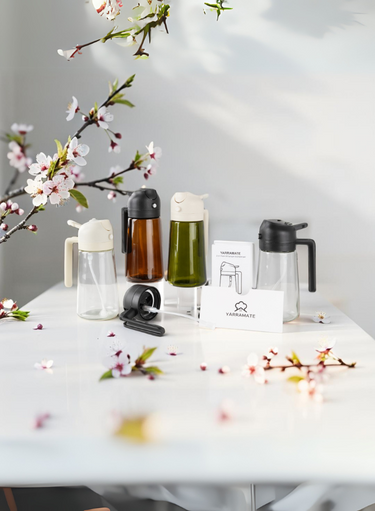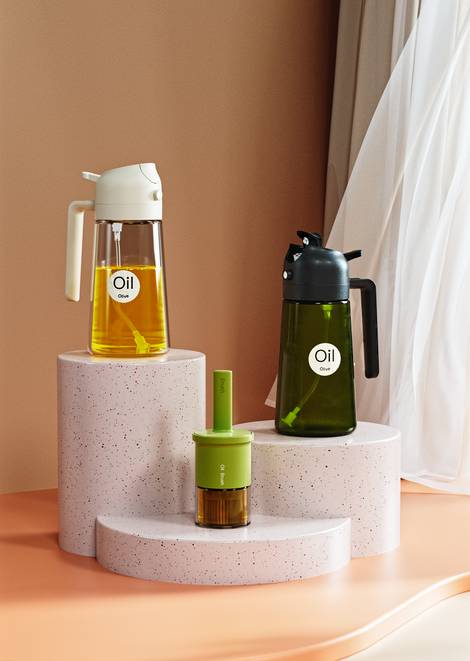Why Put Cooking Oil in an Oil Sprayer? Benefits and Tips
Can You Really Put Oil in a Spray Bottle?
One common kitchen question is: Can cooking oil be safely stored and used in a spray bottle? The answer is yes—but only if you choose the right sprayer and use it correctly. An oil sprayer isn't just a trendy gadget; it's a tool that makes cooking easier, healthier, and even more fun. In this guide, we'll walk through the benefits, potential risks, the best oil sprayers, which oils work best, and how to use them effectively.

Table of Contents
Why Use an Oil Sprayer?
Cooking with an oil sprayer has become a game-changer for home cooks and professionals alike. Instead of pouring too much oil and ending up with greasy food, you can evenly coat pans, vegetables, or salads with a fine mist. This means less oil, fewer calories, and healthier meals without sacrificing flavor.
Another big advantage is consistency. An oil sprayer ensures that every bite is evenly cooked, especially for roasting or grilling. Imagine golden, crispy potatoes with just the right amount of oil—that’s the magic of an oil spray bottle.
What Kind of Oil Sprayer Works Best?
Not all spray bottles are created equal. Oils are thicker than water and require a sprayer designed specifically for them.
Key Features of a Good Oil Sprayer
- Material: Choose a (dark) glass oil bottle to protect oil from sunlight and keep it fresh longer. Glass is also safer than plastic, as it doesn't leach chemicals.
- Durability: Stainless steel and glass are the most reliable materials. A glass spray bottle for oil is not only eco-friendly but also stylish.
- Design: Look for an oil spray bottle black design if you want a sleek, modern look that also prevents light exposure.
Which Oils Work Best in an Oil Sprayer?
While almost any cooking oil can technically be used in a sprayer, some perform better than others.
Best Oils for Sprayers
- Olive oil: Great for salads, roasting, and light sautéing.
- Avocado oil: High smoke point, ideal for grilling and frying.
- Coconut oil: Works well if warmed slightly before spraying.
- Canola or sunflower oil: Affordable, versatile everyday options.
How to Use an Oil Sprayer Correctly
Using an oil sprayer is simple, but technique matters if you want the best results.
Step-by-Step Guide
- Fill your sprayer with fresh oil (avoid old or cloudy oils).
- Pump or pressurize according to your sprayer’s design.
- Hold 6–8 inches from the food surface for even coverage.
- Spray lightly—less is more.
- Clean regularly to prevent clogging.
Multiple Uses of an Oil Sprayer
An oil sprayer isn’t limited to just frying pans. Its versatility extends to many aspects of daily cooking.
- Roasting vegetables
- Grilling meats
- Spraying baking pans instead of using butter
- Dressing salads
- Even lightly oiling pasta to prevent sticking
Comparison Table: Oils and Their Best Uses in Sprayers
| Oil Type | Best Cooking Use | Smoke Point | Works Well in Sprayer? |
|---|---|---|---|
| Olive Oil | Salads, Roasting | ~375°F | Yes |
| Avocado Oil | Grilling, High-heat Fry | ~520°F | Yes |
| Coconut Oil | Baking, Light Frying | ~350°F | Needs warming |
| Canola Oil | Everyday Cooking | ~400°F | Yes |
| Sunflower Oil | Deep Frying, Roasting | ~440°F | Yes |
Conclusion: Healthier, Smarter, and More Fun Cooking
At the heart of it, an oil sprayer makes cooking more efficient, more consistent, and healthier. It’s about even coating, fewer calories, and better flavor control. For anyone who wants to elevate their cooking game, a sprayer is a must-have tool.
And if you’re looking for one that checks all the boxes—durable, stylish, and practical—we recommend the Yarramate Oil Sprayer. With its sleek dark glass oil bottle design, dishwasher-safe build, and professional-grade performance, it’s the perfect companion for every modern kitchen.


